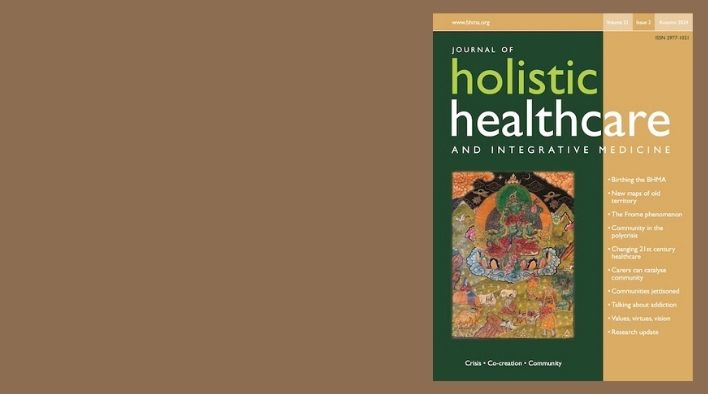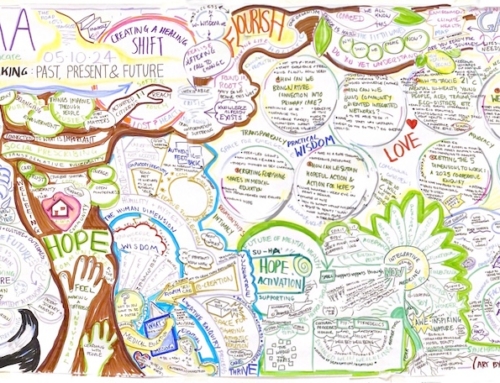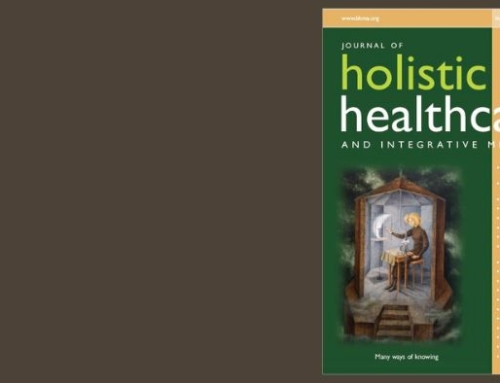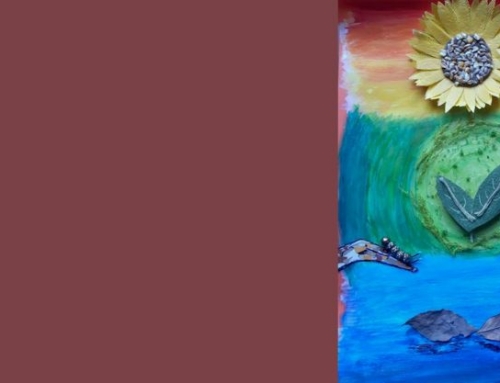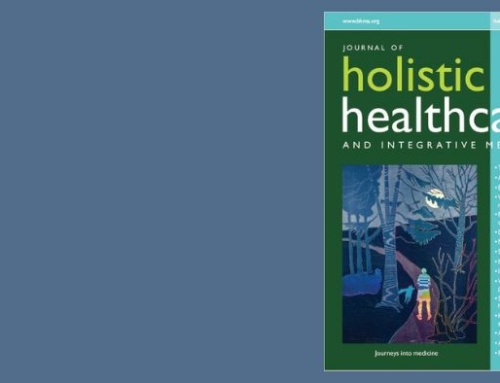Crisis, community, co-creation
Editorial by David Peters
JHH 21.2 Crisis. Co-creation. Community
The NHS belongs to the people. It is there to improve our health and wellbeing, supporting us to keep mentally and physically well, to get better when we are ill and, when we cannot fully recover, to stay as well as we can to the end of our lives. It works at the limits of science – bringing the highest levels of human knowledge and skill to save lives and improve health. It touches our lives at times of basic human need, when care and compassion are what matter most. The NHS is founded on a common set of principles and values that bind together the communities and people it serves – patients and public – and the staff who work for it.
Introduction to the NHS Constitution
If the NHS was a building, its 75-year-old foundations should be crumbling. Shaky they may be, yet after a decade and more of underfunding and accelerating technological change the NHS is still standing, alive and like some ancient tree ready to thrive again. It’s a brave image − the great lone oak surviving every storm. But that’s not how trees work: only a decade ago few would have known of their symbiotic underground connections with a network of fungal threads, that an old woodland is one organism; how amazing that a community of trees shares information to enable the whole to adapt to adversity; astonishing that younger trees can nourish the stump of an ancient one and so tap into the survival information it still contains.
You might wonder why your editor-in-chief is writing about trees in a healthcare journal. But take a moment to take in this rich trove of metaphors about co-evolution, interdependence and the profoundly social nature of living systems. Forgive me for not at this point waxing lyrical about mitochondrial DNA and the microbiome, though here too are rich narratives about collaboration and non-separation. Only to say instead, that while we may celebrate 75 years of our NHS as a brilliant repair shop, let us not forget where health comes from, that it isn’t simply individual, that we do not grow alone and that alone we become in every way more vulnerable.
Two and more decades of neoliberal assumptions have driven a destructive narrative of sovereign individuality, and human competitiveness. Nor has medicine been immune to this highly contagious meme. But I see signs of the tide turning. The great NHS oak is beginning to notice the protection provided by a health-creating woodland, a complex social ecology of relationships, working lives, families, communities and cultures whose sum effect can support wellbeing − or impair it. And crucially, at a time when morale has been low and conflict and failure and burnout so often in the news, the realisation that the NHS tree depends on the wellbeing, hope and optimism of the 1.3 million people who work in it.
So hope and optimism are to be found, even set against a background of climate emergency, at a time when many of our young see no future for themselves. With healthcare systems across the developed world in trouble, politicians are seeing the cost-effectiveness of good primary care; NHS England has set up integrated care systems (ICS) aiming to join up care so that the NHS will work together with councils, the voluntary sector and others to create better services based on local need, with a focus on prevention, better outcomes and reducing health inequalities.
Readers may well say ‘and about time’. No matter, these shifts happen when the time is right – usually in the face of crisis. And a crisis there is, and for 20 years this journal has seen it coming. Yet having survived for 40 years, longstanding readers and members may, not for the first time, be feeling a mix of outrage and optimism. For surely this must be holism’s moment. Your editor believes so, because the NHS is deeply rooted social justice, and collaborative co-creation of a healthy society is enshrined in its Constitution. Check it out on the NHS website where it continues to inspire. Having said this, the NHS alone cannot improve our health and wellbeing, supporting us to keep mentally and physically well…Only society can do this, so let’s pray the new integrated care systems will enable the NHS, councils, voluntary sector and others to work together.
Having given voice to these visions and values for 40 years, the BHMA has much to celebrate. In this issue we focus on collaboration and community as co-creative responses to the entangled problems facing the world, and the world of medicine. We re-present Patrick Pietroni’s foundational paper New Map, Old Territory, originally published in 1984, when a scientific framework for holistic medicine was just emerging. Peter J Whitehouse and your editor reflect on co-creating healthy communities in the polycrisis. In a parallel thread Margaret Hannah tells of how big picture social trends and changing patterns of disease will reshape 21st century healthcare. To build a healthy community calls for immense creativity and resilience. GPs Helen Kingston and Tim Rigg reflect on what has been famously achieved where they practice in Somerset. Paul Thomas tells us why those who care for ill family in the community could be potential catalysts for community creation. David Zigmond agrees that we need to recover community in the wake of industrialised reforms whose human and economic cost may have ‘broken the heart of NHS healthcare’. Perhaps it was early inklings of these trends and their impact on the soul of doctoring that brought 16 doctors together in 1982−3 for a year-long inquiry into holistic medicine and what it might become. In his article Peter Reason, who co-led that research, revisits how this community of inquiry discovered new ways to practice and so laid the foundations of the BHMA. Foundation doctor Hugo Jobst relates how while still a student he co-created a transformational learning opportunity by engaging himself and fellow medics with Glasgow’s community of recovering addicts. Surrey GP Gillian Orrow, becoming dissatisfied with ‘pushing pills out’, describes turning to her local community to ask what they thought about their healthcare needs, and how a Growing Health Together project drew in funding and resources for health creation. Trevor Thompson feels good leadership sits at the beating heart of good medicine (and social change − Ed). He explains his neolympics’ five interlocking circles of values, virtues, vision, relations and operations and how it sets out to change the leadership game. We hope you will enjoy this issue of JHH.

